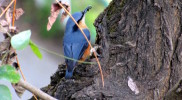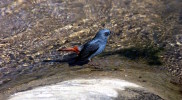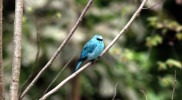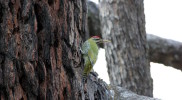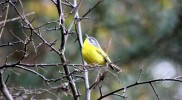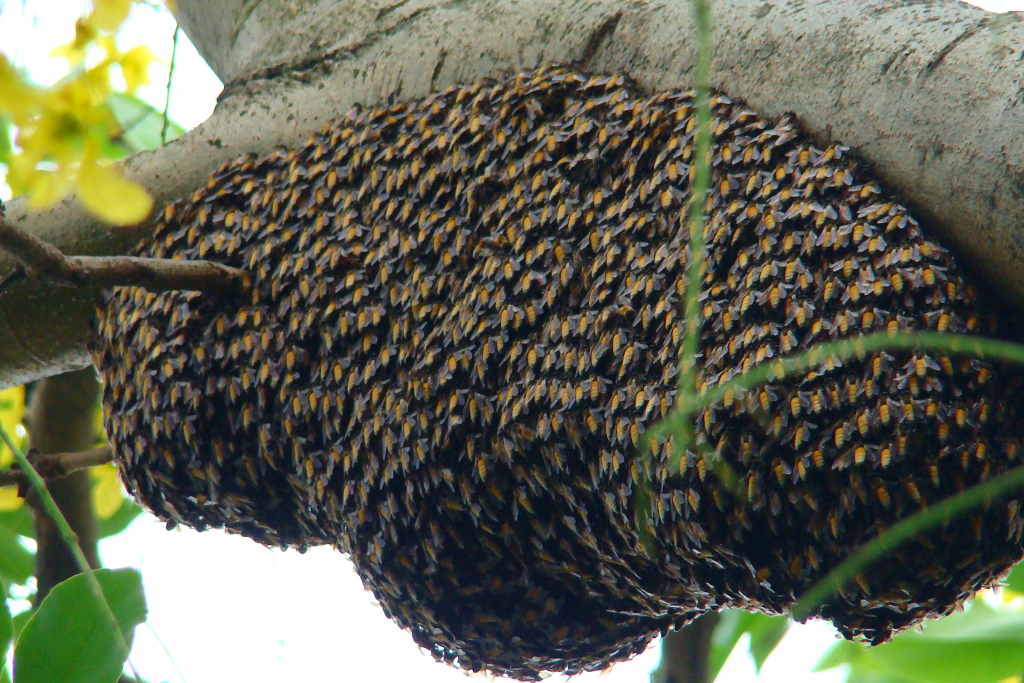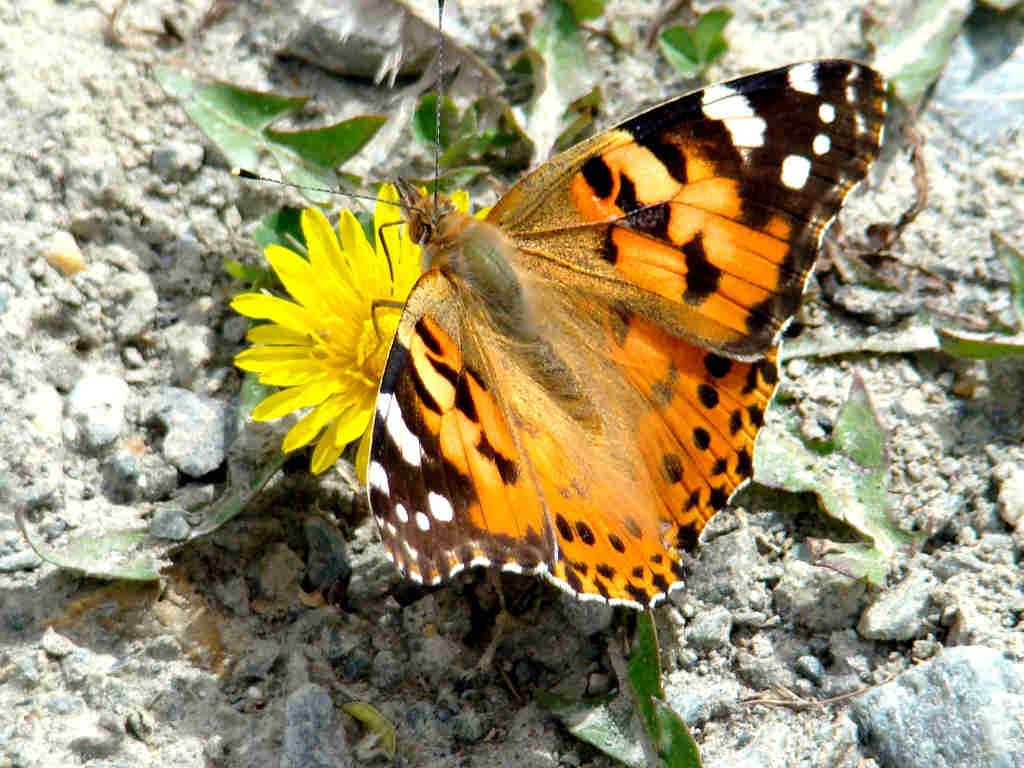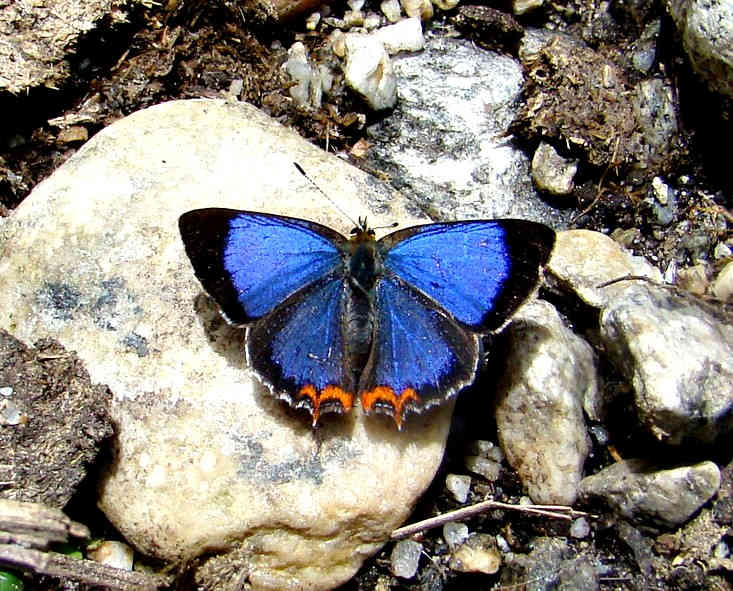Mammals
The Great Himalayan National Park (GHNP) is host to a wide variety of vertebrate fauna, reflecting its diversity of habitats and climatic zones and including 31 species of mammal, belonging to six orders ‒ primates, carnivorans, cloven-hoofed mammals, insectivores, rodents and lagomorphs (hares, rabbits and pikas).
Most Himalayan fauna are protected under the Indian Wildlife Act, including the bharal (blue sheep), common leopard, snow leopard, Himalayan brown bear, Himalayan tahr (wild goat), musk deer and serow (goat-like antelope). The Himalayan musk deer and snow leopard are endangered species, whilst the Himalayan tahr is endemic to the western Himalaya.
An ongoing ban on hunting was issued by the state government of Himachal Pradesh in 1980s.
The herbivorous Himalayan goral (antelope), Himalayan tahr and bharal are prey to common leopards in the forest zone and snow leopards above the tree line. Black bears also inhabit the forests, whilst brown bears are found in the alpine meadows.

Ibex in GHNP (Click to enlarge)
Autumn (September to November) is the best season for sighting mammals at high altitude, after which they begin their migration to lower altitudes.
Lower down, the solitary Himalayan musk deer inhabits moist gorges filled with thick vegetation. These primitive deer produce valuable musk and, in some parts of the park, reach a relatively high density of six to nine animals per square kilometer.
Birds
The Great Himalayan National Park (GHNP) is home to 209 confirmed bird species, which attract birdwatchers from across the globe. These include the endangered western tragopan and four other pheasant species. Raptors (birds of prey) are also a major attraction of the park, including lammergeiers, Himalayan griffon vultures and golden eagles.
Below is a brief survey of the park’s birdlife, by season, terrain and altitude, followed by more detailed descriptions of particularly important species.
Survey of GHNP’s Bird Life
Long-tailed minivets, yellow-bellied fantails, wallcreepers, and white-collared and grey-winged blackbirds are all common at GHMP’s lowest altitudes in winter. Heavy snowfall from October to February may also force down more exotic species, such as the scaly-breasted wren babbler, variegated laughing thrush, spectacled finch and golden bush robin.
A few species of longer-distance migrants also prefer to overwinter in the park, including the blue-capped redstart, black-throated thrush and black-throated accentor.
The Himalayan rivers and streams support distinctive bird communities ‒ the most diverse of any mountain range on earth. The most prominent species are the white-capped and plumbeous water redstarts, which can be sighted during the summer at altitudes of up to 4,000m. The white-capped redstart is especially fond of the small, rapid streams that feed watermills in the valleys adjacent to the park.
Read more about birds
The brown dipper ‒ less prominent than the water redstarts but no less widespread ‒ can be identified by its characteristic call as it buzzes along rivers before diving underwater to pluck insects from stones and rocks on the river bed.
Less abundant are the little and spotted forktails, which are usually found along small, wooded streams. The latter displays a long, scissor-like, black-and-white tail. Although not a resident of the park, the grey wagtail is a common winter visitor to low-altitude streams.
GHNP’s lower forest zone is home to the black-crowned and Himalayan jays, the yellow-billed magpie, the grey-headed and black-crowned flycatcher warblers, and the bar-tailed treecreeper. The zone also gives sanctuary to several species of leaf warbler and tit, a number of small babblers ‒ the black-chinned, white-browed and green shrikes ‒ as well as the rufous sibia, chestnut-tailed minla, and whiskered yuhina.
During the summer, several species of flycatcher can also be found in the lower forests, including the beautiful niltava and the subtly-coloured verditer flycatcher.
The higher-altitude forests are inhabited by a distinctive array of birds in summertime, including the orange-flanked bush robin, the ashy-throated, pale-rumped and buff-barred leaf warblers, the grey-crested, dark-grey, yellow-browed, white-throated and rufous-vented tits, the goldcrest and the white-cheeked nuthatch. The warblers move lower down in winter but the tits and goldcrest remain in the high forests even during heavy snowfall.
Golden eagles, lammergeyers and Himalayan griffon vultures are all common in GHNP’s subalpine zone, while the blue-fronted redstart, scaly-breasted wren-babbler and white-browed fulvetta inhabit the scrub, augmented in the autumn by large flocks of rufous-streaked accentors and plain mountain finches. The snow partridge, grandala and solitary snipe can occasionally be sighted in the highest meadows.
The true alpine zone is rich in flowering plants but does not support a large diversity of birds, but is home to the rufous-breasted accentor, Himalayan snowcock and dark-breasted rosefinch.
Parts of the interior areas of the park ‒ especially the upper part of Parvati Valley ‒ support ecology similar to that of the trans-Himalayan zone. The mistle thrush, winter wren, fire-fronted serin, black redstart, rock bunting and red-billed chough are all common in these areas.
Five pheasants of GHNP
The Great Himalayan National Park (GHNP) is probably the best place in India to observe the spectacular pheasant family in its natural habitat. It is the only place in the world where a detailed ecological study of the pheasant, involving radio-telemetry, has been undertaken .
Migratory birds
At least 50 bird species are summer visitors to GHNP, including the Eurasian woodcock, several cuckoos, the oriental turtle dove, grey nightjar, ashy drongo and house martin, as well as many species of flycatcher, warbler, chat and thrush.
Some resident species move to lower altitudes within the Beas catchment for the harshest mid-winter period, although few observations of this have been made. A few species migrate to the park in winter, including the grey wagtail, rufous-streaked accentor and Güldenstädt’s redstart. None of GHNP’s bird species can currently be confirmed as passage migrant ‒ stopping over en route to a final destination ‒ although it is possible that the short-eared owl, fork-tailed swift, Eurasian chiffchaff and Tickell’s leaf warbler fall into this category.
Threatened and near-threatened species
Although no single bird species is unique to Himachal Pradesh, the survival of a few of GHNP’s residents is considered to be cause for concern. These include the western tragopan, cheer pheasant, long-billed thrush, red-headed vulture and white-throated tit, although the latter two are tolerably abundant.
A few species are at the western edge of their distribution, including the white-browed shortwing, which has been scantly reported west of Nepal, the little pied flycatcher, and the rufous-vented tit ‒ also rare west of Nepal. Although found from Hazara to Nepal, the spectacled finch is sparsely distributed but regularly sighted in GHNP’s dense spruce and fir forest.
The long-billed thrush frequents heavy forest with dense understory (plant life growing beneath the canopy), at around 2,000m. It can usually be found in the Rolla area and other parts of GHNP. This species is likely to have been adversely affected by the extension of agriculture into the temperate deciduous forests of Himachal Pradesh
Invertebrates
Invertebrates play an important role in maintaining the Great Himalayan National Park’s life processes and are a vital component of its food webs. Other than flying insects, most of the park’s invertebrates have limited powers of dispersal and are very sensitive to disturbance of their habitats, making them useful indicators of the ecosystem’s health. Only very preliminary surveys of the park’s invertebrates have so far been conducted.
Insects
By virtue of their vast numbers ‒ in terms of both species and individual organisms ‒ insects are vital determinants of GHNP’s ecological processes. Their presence is determined by the availability of food, suitable climatic conditions and shelter from disturbance and natural enemies.
GHNP’s insect population can be broadly classified into three categories:
1) Vegetation feeders ‒ mainly beetles and plant bugs.
2) Pollinators ‒ flies, butterflies, moths and bees.
3) Biodiversity indicators ‒ tiger beetles, ground beetles and dragonflies.
Only six insect orders ‒ beetles, wasps, flies, plant bugs, dragonflies, and butterflies ‒ have been studied in the park, representing 37 families, 108 genera and 125 species. Research has established ecological relationships between flowering plants of sub-alpine and alpine areas with their corresponding insect visitors.
Butterflies
44 species of butterfly have been recorded in GHNP. The common blue Apollo resides at around 4,000m in the alpine Tirthan and Sainj valleys, whilst some endangered translucent white butterflies of the same genera have been observed above Saketi in the Tirthan Valley. The rare yellow swallowtail has also been recorded in the Tirthan Valley, at around 4,000m.
Earthworms and leeches
A total of 11 species of earthworm have been recorded at GHNP ‒ four endemic to Himachal Pradesh, and seven exotics. Among these are two rare new species belonging to the genus Plutellus, and the common native species Perionyx bainii.
Native species predominate in undisturbed natural ecosystems, such as conifer and mixed broad-leaved forests, while exotic species predominate in disturbed and human-used environments. Only one of the species recorded in a GHNP thach (meadow) was native to Himachal Pradesh.
Only three species of leech have been recorded at GHNP. Albo glossiphonia weberi and Barbronia weberi are aquatic species found mostly in small streams in the ecozone, while Haemadipsa zeylanica agilis is a terrestrial bloodsucker that attacks livestock and human beings.
Molluscs
GHNP is home to 14 mollusc species, 85.7% of which are terrestrial ‒ nine types of land snail and three types of slug. Of these, Anadenus modestus and Macrochlamys kuluensis are endemic to Himachal Pradesh, whilst Macrochlamys glauca has been identified as a minor maize-crop pest in the ecozone.
The ecological distribution of molluscs is biased towards mixed deciduous broad-leaved forests (seven species) and mixed conifer and broad-leaved forests (six species). They were also identified in thach (meadow) areas.
Species richness in terrestrial molluscs directly correlates with the availability of calcium, litter for food, moisture content and shelter from desiccating wind. Low diversity of molluscs in the ecozone may indicate high disturbance by the large number of human settlements and their associated activities.
Mollusc species, like other lower groups of organisms, are very sensitive to habitat alteration and prone to local extinction when forced into fragmented populations.
Amphibians and Reptiles
Due to cold climate, inaccessible habitat and lack of expertise, the herpetofauna of the Himalayan region is poorly studied. It has been reported that 27% of recorded reptile species and an enormous 40% of amphibians in the Himalaya Hotspot are endemic. This suggests there may be some endemic reptiles and amphibians in GHNP.
The most common amphibian in GHNP is the Himalayan toad which, when handled, secretes a corrosive fluid. Other amphibians include the marbled toad, Stoliczka’s frog and the beautiful stream frog, which has a large sucker used for clinging to rocks in fast-flowing streams.
Reptiles include the Kashmir rock, which inhabits holes and crevices in rocks, the Himalayan ground, which prefers damp areas or open grasslands, and the Karakoram bent-toed gecko, which lives under stones and in crevices.
GHNP is also home to several snake species, such as the docile eastern keelback, the Indian rat snake and the Himalayan pit viper.





